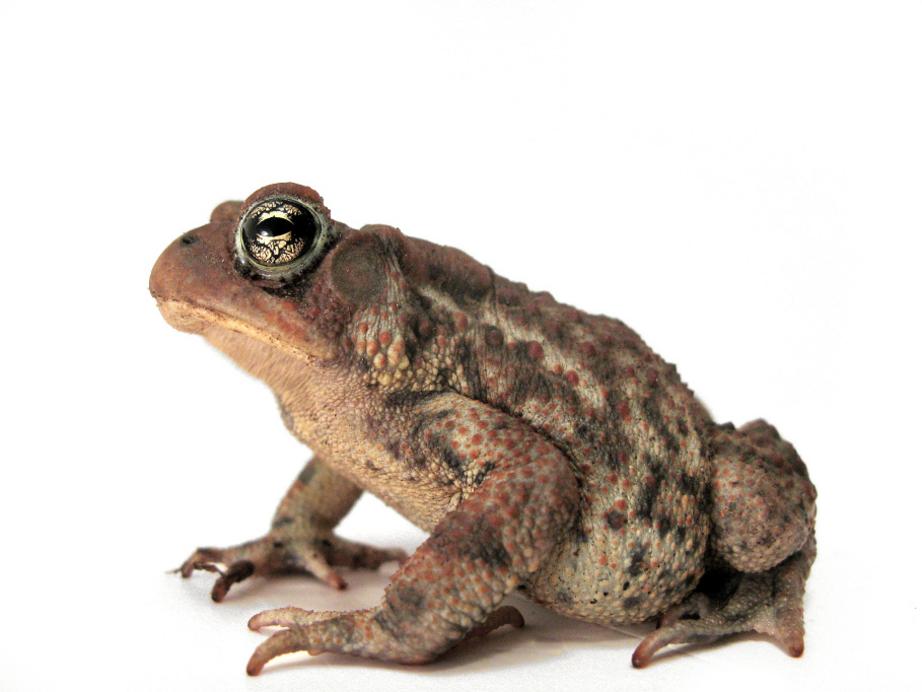Graziers hopeful new cane toad trap system will 'make a serious dent' in pest population
 Rob and Nadia Campbell test the tadpole trap on their property near Monto.
Rob and Nadia Campbell test the tadpole trap on their property near Monto.
A Queensland cattle property has become the front line for a groundbreaking method to stop the spread of cane toads, turning the pests' own toxin against them to kill toad tadpoles by the thousands.
Key points:
- Traps use cane toads' deadly toxin to attract, trap tadpoles
- US-based pest control company has bought the patent
- UQ researchers hope bait trap success makes serious dent in tadpole and toad populations
Rob and Nadia Campbell are road-testing the environmentally-friendly bait traps on their almost 7,000-hectare property, Goondicum, near Monto.
"We've been trialling the new traps with baits to reduce the cane toads at tadpole phase, which is far more efficient than running around catching toads individually," Ms Campbell said.
"When you can get a large number of tadpoles, then you're taking those out of the breeding cycle."
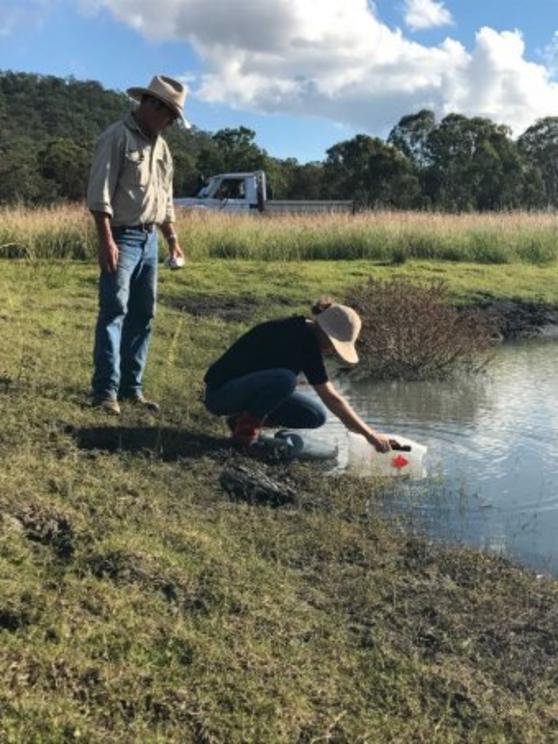 The Campbells were keen to try the invention.
The Campbells were keen to try the invention.
The traps, which were designed by researchers from the University of Queensland and the University of Sydney, use the cane toads' deadly toxin to attract and trap cane toad tadpoles.
UQ Institute for Molecular Bioscience (IMB) researcher Professor Rob Capon said the breakthrough came after scientists discovered cane toad tadpoles hunt out and eat other toads' eggs.
"The hypothesis there was that the eggs must be releasing some form of chemical attractant or signature, a smell that the tadpoles are honing in on, and that allows them to find the eggs, even in very disturbed water, and then of course they eat them," Professor Capon said.
Eventually, the researchers were able to confirm that the smell that attracts the cane toad tadpoles was actually the toads' own toxin, excreted onto the eggs by the adult female.
"They are smelling the toxic characteristic of the eggs and that allows them to come in," Professor Capon said.
"The key was, if you can mimic the egg smell and put it in a trap, maybe the tadpoles will chase after that smell and instead of ending up at this gigantic nest of eggs, they end up inside a trap, and that's what we did.
"We worked out how to make that on a relatively large scale cheaply, so if you have dead adults, you can make tadpole attractant, and then you formulate that into a device that you put in a trap, and essentially you fool all the tadpoles into swimming into the trap."
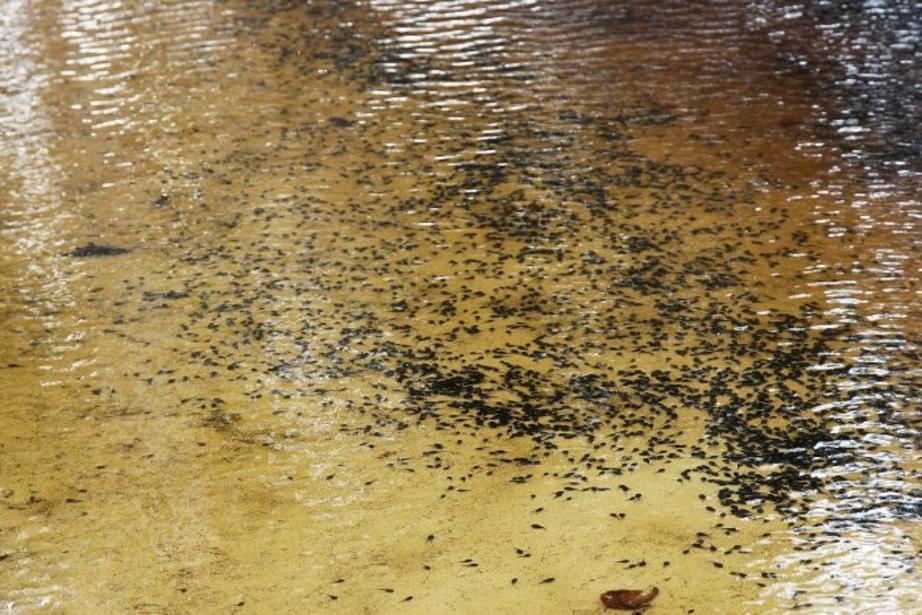 Toads breed twice a year, and one female can lay more than 30,000 eggs.
Toads breed twice a year, and one female can lay more than 30,000 eggs.
Taking toad busting to a new level
A US-based pest control company has bought the patent to the trapping technology, but it is still several years away from becoming commercially available.
In the interim, to try and get the technology out of the lab and into the community, the research team from UQ set up the "Cane Toad Challenge".
"It's a community engagement and citizen science program, the intention of which is to give the technology away for free, as fast as possible, to as many people and organisations as we can to establish credibility and gain market acceptance," Professor Capon said.
With almost 20 dams on their grazing property and millions of toads and toad tadpoles, the Campbells jumped at the chance to participate in the challenge.
"One of the biggest things with the toads is that they're harvesting a lot of our dung beetles at night, especially off the cow pats, and to us that's taking away a tool to put nutrients back into the ground," Mr Campbell said.
"I don't think people realise how much it's costing people on the land to have these animals living in your dams, in your ponds, what the actual carry on effect is.
"We're just starting to see the tip of the iceberg now, [and] as the toads start to expand I think people on the land will realise it's going to be a big economic cost."
The Campbells are so dedicated to the cause that Nadia recently flew from Gladstone to Brisbane carrying 400 cane toad toxin glands, after the pests were caught, euthanased and dissected on their property.
She hand-delivered them to the research team at UQ, where they will be used to extract toxin for the bait traps.
"The community has just jumped on it like there's no tomorrow," Professor Capon said.
"In the last four months or so we've had 25 organisations sign up.
"These range from city councils, regional councils, Bundaberg, Gladstone, Tweed, it goes to companies, it goes to volunteer land care groups, golf clubs, schools, pastoralists, all sorts of organisations have come on board."
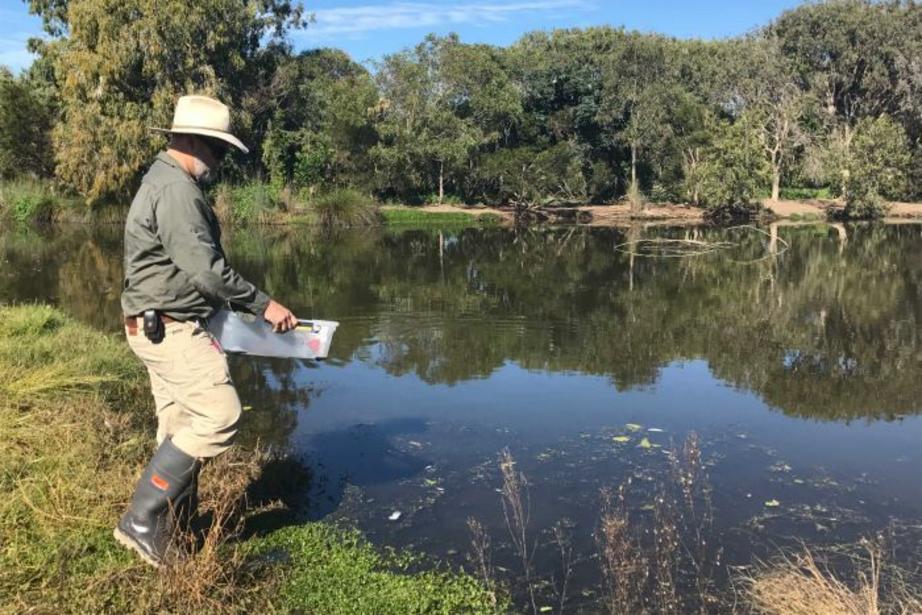 Moreton Bay Regional Council has signed up to the program.
Moreton Bay Regional Council has signed up to the program.
Trap will hopefully make 'serious dent' in toad population
The traps are made up of plastic containers, funnels and an airstone loaded with toad toxin. When placed in water bodies where toad tadpoles are living, they can trap several thousand tadpoles at a time.
The ability to trap toad tadpoles en masse is important, because cane toads' rate of reproduction is staggering.
The pests breed twice a year, and one female can lay more than 30,000 eggs at a time.
"We've found the baiting to be really efficient," Ms Campbell said.
"Efficient — and really not time consuming, you know it's pretty easy to handle, it's just like setting a crab pot really.
"At this stage we're placing them in the dams, which is where the highest number of the tadpoles we can see along the shallows [are], and that's where we're having some good results."
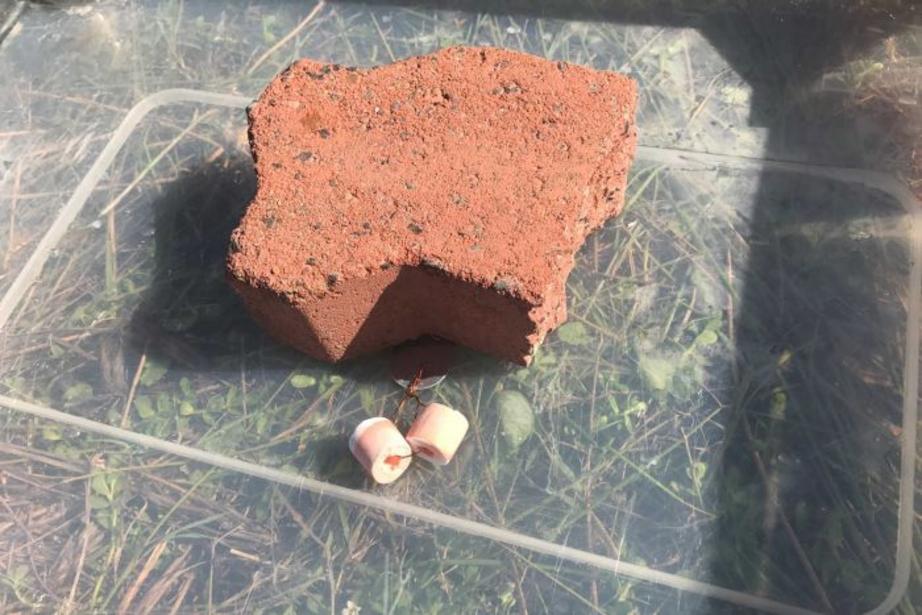 The toad trap contains airstones loaded with toad toxin, which attracts tadpoles.
The toad trap contains airstones loaded with toad toxin, which attracts tadpoles.
Professor Capon is hopeful the success of the bait traps encourages more people to try and tackle the toad problem, and stop the spread of the invasive pests.
He admitted it was not going to be a panacea, but said it was a step in the right direction.
"It's not going to get rid of tadpoles and toads in Australia, but what we hope it will do is make a serious dent in tadpole populations and toad populations around defined water bodies," he said.
Early results on their property have given the Campbells hope of a toad-free future for Goondicum.
"The cattle is obviously the primary commercial business but preserving what we have here is also important," Ms Campbell said.
"As is showing that you can operate a beef grazing business, whilst coexisting with the environment and actually going further to try and protect that."
"If this keeps going the way it's going, it looks really good," Mr Campbell said.

